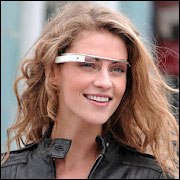
Virgin Atlantic recently announced the expansion of a pilot project in which flight attendants use Google Glass to meet and greet customers. For the initial project, the airline equipped the concierge staff in its Upper Class Wing at London’s Heathrow airport with Google Glass so they would have easy access to such information as connecting flights or loyalty points.
Virgin Atlantic ultimately decided on Google Glass instead of tablets or smartwatches, which it had been contemplating, because looking at a watch might give people the impression that the staff members were bored with their clients, while tapping through a tablet and not maintaining eye contact might be distracting for both passenger and attendant, reported Skift.
The Drawbacks of Tablets, Smartwatches
Other companies opting to use smart devices at the point of sale or point of engagement likely will come to these insightful conclusions as well. A tablet can work well and stay unobtrusive in many customer engagement scenarios, such as a retail store.
However, for scenarios in which a company wants to provide a lot of handholding and personalized one-on-one service (translation: these are high-value customers), smart glasses may be the best bet among options available on the market today.
Another reason smart glasses work in this context: The service reps are expected to be wearing them, much like they are expected to be wearing ear pieces and communicating with larger a network of agents or a customer service desk. In other words, the customer can see that this is no glasshole, but someone in a corporate uniform who has a legitimate reason to be using the technology.
In short, the customer service case for Google Glass, or smart glasses in general, is a strong one. Virgina Atlantic’s pilot project suggests the possibility that at some point in time companies will offer all customers the same personalized, one-on-one service currently reserved for their most well-heeled clients.
Personalization Pays Off
There are many reasons companies should make this investment aside from making their customers feel good. Personalization works. Emails with personalized subject lines tend be opened more and clicked on more, as surveys have found.
Customers find personalized ads more engaging and educational, a Yahoo survey has found. Conversely, customers become irritated with ads that are irrelevant.
Automating Customization
However, there is a downside to being able to automate the personalization of customer service. Too often nice little touches such as using a customer’s name come off as insincere, especially if the underlying policies are not customer-friendly.
“Oh hello Mrs. Brown, how was your flight? Really, your luggage is missing and this is the vacation you’ve been saving for and dreaming of for 25 years? Well, I am sorry, Mrs. Brown, but it shouldn’t take more than 24 to 48 hours to locate and deliver your suitcase.”
Google Glass probably is not completely immune from awkwardness, though. Imagine the above conversation with an agent wearing Glass, who might be able to intersperse her comments with observations about how the trip Mrs. Brown took from Florida to New York last year went off without a hitch, and even mention that when her husband travels, he usually brings his luggage on board. “So, Mrs. Brown, you can see that as an airline we usually are on the ball.”
Google Glass has great potential to bring customer service to the next level. Companies just have to make sure that besides having the infrastructure, back-end systems and employee training in place, they have customer service policies that are at least as nifty as those glasses.






















































